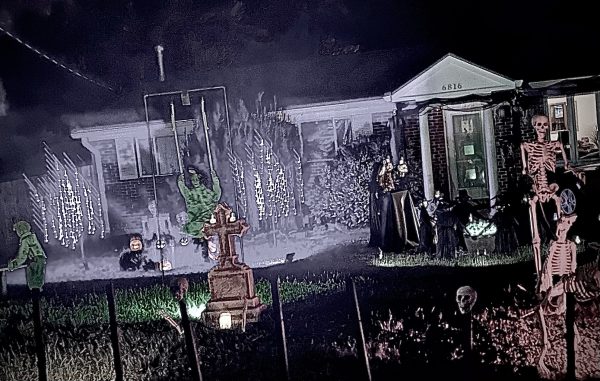Are Aliens real?
For many years people have seen strange things happening in the sky. From sudden balls of fire to Flying Saucers, people just couldn’t explain them.
NASA has now put a team together to investigate these “unidentified aerial phenomena,” better known as unidentified flying objects (UFO’s.) According to CNN, the team includes 16 scientists and will focus on the best way to research the phenomena rather than the specific phenomena that have been witnessed.
According to the News Release, “Without access to an extensive set of data, it is nearly impossible to verify or explain any observation. Thus the focus of the study is to inform NASA what possible data could be collected in the future to scientifically discern the nature of UAP.”
These phenomena have long captured the imagination of people around the world.
“The galaxy is an extremely vast place with trillions of planets and stars. I don’t understand why people think they aren’t real. I mean, there are just so many,” said one Longfellow student who has asked to remain anonymous.
Like many others, this student has good reason to believe. He’s seen some unexplained phenomenon with his own eyes.
“I once went on a camping trip, and when I looked at the sky, I saw three bright lights moving erratically. I knew they weren’t planes because they moved so fast,” he explained.
Though there has been no evidence that aliens have visited earth, one of the most popular science fiction exercises is to figure out why they are here. Stephen Hawking, widely considered one of the most brilliant scientists in history, believed that aliens would definitely be a threat.
“If aliens ever visit us, I think the outcome would be much as when Christopher Columbus first landed in America. Which didn’t turn out very well for the Native Americans,” reported Vox Creative in their article “Here are 5 things serious scientists believe about extraterrestrial life.”
Other theories include that they could inadvertently contaminate earth with microbes that humans can’t withstand, that they might send technology first, and that they might even look a lot like us.
While the NASA group is figuring out how to analyze data on UFO’s, others are focused on what to do if they arrive. The Guardian’s recent article “If aliens contact humanity, who decides what we do next?” shared concerns that our worldwide reactions to COVID-19 show we are not prepared for something of this magnitude.
Dr. John Elliott, a computational linguist at the University of St. Andrews is aiming to bring together an international team to figure out how we should respond to any alien contact. The group will be part of SETI (Search for Extraterrestrial Intelligence) but will focus on actions to take post-detection.
Questions they hope to answer include when information should be released to the public, how it should be deciphered, and who gets to respond. There are a lot of factors to think about that have little to do with the aliens and everything to do with the unpredictable behavior of humans.
“After the initial announcement, we’d be looking at societal impact, information dissemination, the media, the impact on religions and belief systems, the potential for disinformation, what analytical capabilities we’ll need, and much more: having strategies in place, being transparent with everything we’ve discovered – what we know and what we do not know,” Elliott told The Guardian.
So even if aliens are real, there are plenty of people considering how we should respond. That means the rest of us are free to dream and observe. So remember, keep your EYE on the SKY.












